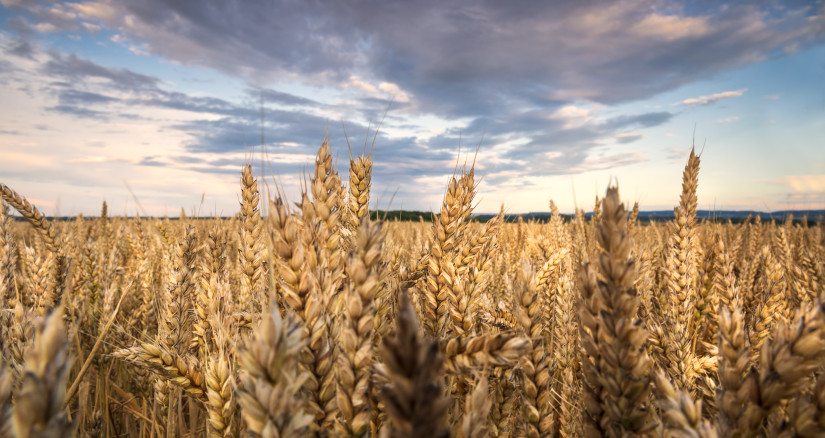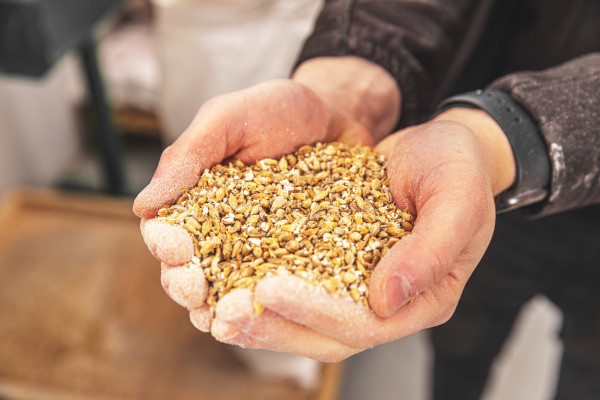
How Pet Food Keeps Millions of Tons of Food Waste Out of Landfills
It is estimated that the U.S. produced approximately 9.8 million tons of pet food in 2024, using over 600 raw ingredients, according to a recent IFEEDER report. Included were all pet food formats—dry, wet, frozen, and refrigerated—and treats for both dogs and cats. Chicken-based ingredients, crop grain fractions (flours, starches, fibers, and plant proteins), and beef-based ingredients rounded out the top three categories used, with chicken-based ingredients being far and away the top category used in U.S pet food production.
Furthermore, the report estimated that up to 50% of the ingredients used in pet food are upcycled, defined as any ingredient not currently used in the human food supply chain, which prevents additional food waste going to landfills. The value of these upcycled ingredients was estimated at $3.4 billion annually and accounted for 26% of the value of all pet food ingredients used in the U.S. in 2024. The most common upcycled ingredients in pet food include meat and meat by-products, animal fats, egg products, and grain by-products that are otherwise not used for human food.
If the pet food industry did not use over 4 billion tons of these upcycled ingredients, competition for human food ingredients would be intense, likely leading to higher prices for the food we purchase for our own consumption. Not to mention that using more of these non-human edible ingredients currently used in pet food would send fewer of them to our landfills. Currently, food waste accounts for almost 25% of landfill waste and 58% of landfill methane emissions, much of which is not recovered and is dispersed into the atmosphere. If pet food did not utilize upcycled ingredients, these numbers would likely be much higher, putting even greater pressure on current landfill space capacity.

Photo by grafvision
Livestock feed has historically been an avenue for upcycled ingredients. Dried distillers’ grains (by-product of the distilling industry), beet pulp (a by-product of the sugar industry), and wheat midds (a by-product of the baking industry), have been historically used in livestock feeds. One study compared traditional livestock feed ingredients, such as corn and soybean meal, with supermarket and restaurant food waste. It reported that these forms of human food waste exceeded the energy value of corn and were comparable to the protein value of soybean meal which makes them great options for livestock feed ingredients. Of course, variations in food waste composition must be taken into consideration in any novel upcycled food ingredient process, but it has been proven possible to accommodate.
Another study found that 15% of the total feed ingredients currently used in livestock and aquaculture (farmed fish) production were derived from ingredients that could be used in the human food supply chain. By using food waste destined for landfills in place of these potential human food ingredients, global human food needs could be eased.
The potential to upcycle more wasted food seems like the right thing to pursue; however, it isn’t always easy. For any paradigm shift to occur, there has to be a business incentive for the industry to pursue research to help drive these food supply changes. Sustainability and eco-friendly ingredient stories only go so far when a company’s business plan is put to the test by investors or other capital sources. All of this has to make business sense, even though it may be good for society, the planet, and animal agriculture. Some companies have received significant funding to continue their research in this space, but more is needed to scale these processes to the scope required to make a real difference.

Photo by WBMUL
Other challenges to converting human food waste into livestock feed or even pet food ingredients include the logistics of collecting and transporting waste food to facilities capable of processing it. Much of the human food waste, such as fruits, vegetables, and meats, must be refrigerated until processed safely to avoid spoilage, which would make them unfit for even upcycled livestock feed. Partnerships and coordination among farms, grocery stores, restaurants, and upcycled ingredient manufacturers must be precise, consistent, and affordable. Research and business incentives to map out how this can work on a large commercial scale are currently lacking, and many companies fall short of pushing their ideas across the finish line due to funding limitations, as well. Consumer education is also important for food ingredient upcycling to get the pet parent to understand that just because a pet food may not be made with all “human grade” ingredients that it is not sound nutrition for their pet.
Concerted efforts by the industry, nutrition experts, regulatory officials, and government agencies are necessary to reduce food waste by upcycling it into pet food or livestock feed ingredients. Expert consultants at BSM Partners can help companies with only an idea or even a well-planned, existing ingredient supply, achieve their goal of bringing a financially sound, sustainable upcycled ingredient to market.
Hear more about upcycled ingredients in pet food here, brought to you by the Barking Mad podcast.
Follow us on LinkedIn for the latest updates on all things happening here at BSM Partners.
About the Author
Dr. Bradley Quest, DVM, is the Principal Veterinarian at BSM Partners. He has practiced clinical veterinary medicine, developed and tested hundreds of pet food and health products, performs extensive animal health research, and helps navigate pet food ingredient approval for clients.
This content is the property of BSM Partners. Reproduction or retransmission or repurposing of any portion of this content is expressly prohibited without the approval of BSM Partners and is governed by the terms and conditions explained here.